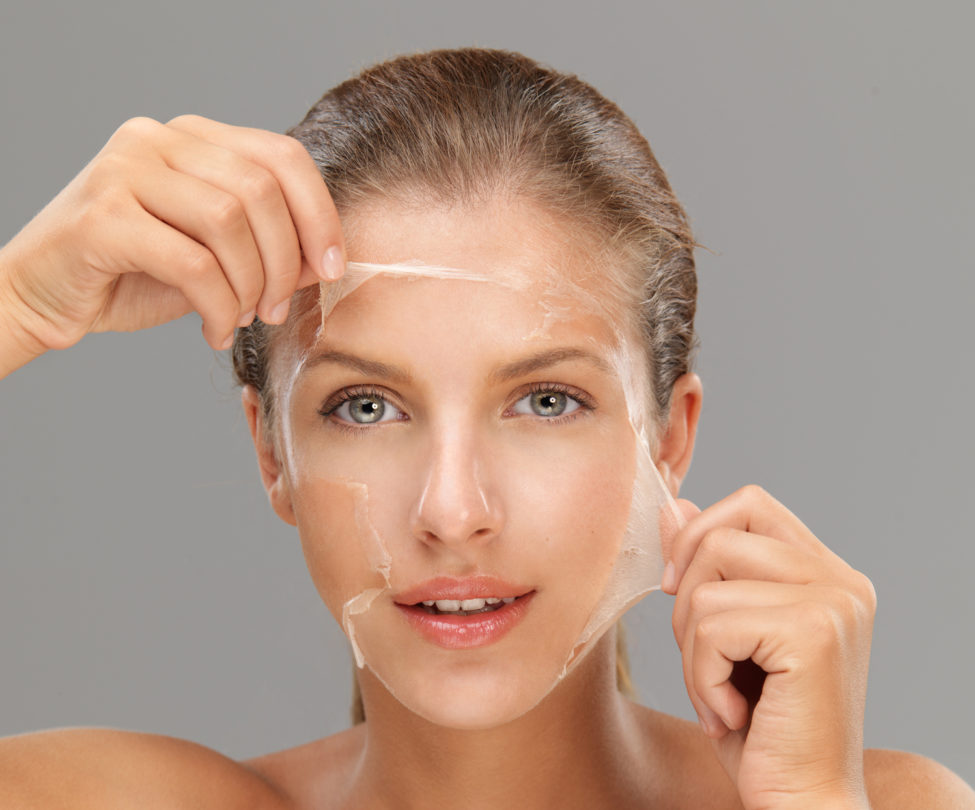WHAT'S NEW AT GLOWDERMA
BLOG SPOT
CHEMICAL VS PHYSICAL SUNSCREEN.

This time of year, sun protection is top of mind. Whether you’re curious about the best sunscreens for everyday wear or the most common SPF myths, we’ve got you covered this summer.
As we know, sunscreen is the single most important part of a daytime skin care routine. Whether you’re looking for a dewy glow or a matte finish to prep your skin for a full face of makeup, it can be difficult to find the one that works best for you. Sunscreen comes in three main forms—mineral, chemical and hybrid, each offering sun protection to help defend against damaging UV rays, but with different methods to achieve it. Learn more about the difference between mineral and chemical sunscreens and which may work best for your skin.
What is Mineral Sunscreen?
Mineral sunscreen, also known as physical sunscreen, uses mineral-based ingredients zinc oxide and titanium dioxide to help to reflect and scatter harmful rays from the sun. The main difference between mineral (or physical) sunscreens and chemical sunscreens is how they handle the sun’s rays. The active ingredients in mineral sunscreens are titanium dioxide and zinc oxide, which create a barrier on your skin that reflects UV light. They don’t absorb into the skin. In addition to offering sun protection, zinc oxide has anti-inflammatory benefits that work well with reactive skin. This formulation starts working immediately after application, as opposed to chemical sunscreen, which can take about half an hour for effective sun protection. Finally, a mineral sunscreen does not need to be reapplied as often as a chemical sunscreen.
While commonly known for leaving a white cast, mineral sunscreens have evolved with now better formulations to suit all skin types. The tinted ones also make broader application possible. Mineral sunscreens are often recommended for children, pregnant women and people with sensitive or acne-prone skin.
What is Chemical Sunscreen?
While physical sunscreens work like a reflective barrier on skin’s surface, chemical sunscreens partially absorb into skin and prevent UV damage through a chemical reaction. Chemical sunscreen usually contains oxybenzone, dioxybenzone, avobenzone, octocrylene, homosalate, octinoxate and other chemicals, which absorbs and releases the damaging UV rays back into the environment. If the active ingredients listed on your sunscreen’s label contain anything other than zinc oxide or titanium dioxide, it’s a chemical sunscreen (though some hybrid formulas contain both chemical and physical ingredients).
Chemical sunscreen is considered easier to apply as it does not leave behind the white residue often associated with physical sunscreens. Chemical formulations tend to be lighter and for that reason, are often preferred by oily and more resilient skin types.
Be well, Feel well, Look well.
TO PEEL OR NOT TO PEEL...

I don’t know if it’s because we were in confinement for so long, but this summer has been particularly beautiful with unplanned meetups with families and friends. Sadly, all good things must come to an end. With fall comes the routine, colder weather, and pumpkin latte. Children are back to school and most of us are back to work more consistently. In all the seasonal and life routine changes, let’s not forget our biggest organ, the skin.
In my opinion, Fall and winter are the perfect time for a chemical peel because.. why not? We’re indoor more often and are less exposed to the sun. This allow us to protect our new skin longer. Not all chemical peels are created equal. the medical grade peel offer higher concentration of acids to help replenish your skin. Yes! you heard me correctly, we’re talking about acids; this is when you leave it to the professionals! Not only can the wrong chemical peel in the wrong hands can do a lot of damage, but it also sets your skin back a few months to repair!
What Is a Chemical peel you ask? As we age, cellular turnover slows down leaving our skin appearing dull, damaged, and uneven. A chemical peel is powerful chemical exfoliant. A series of chemical peels can speed up cellular turnover and treat acne, improve the texture, tone, and the overall appearance of the skin. Why should you think of getting a Chemical peel? There are lots of benefits of a medical grade peel but here’s a few that a particularly fancy and excites me:
- It helps reduce fines under the eyes and around the mouth. It helps reveal a healthier
looking skin. - Corrects the effects of sun damage as well as premature wrinkles caused by.. well, the sun! Allow me to remind you that sunscreen is not an option. Just layer it. Everyday. Don’t think about it.
- Helps improve the appearance of mild scar and acne. That clear complexion is closer
than you can imagined. - Got Age spots, freckles, hyperpigmentation or melasma? Well, these conditions can all be improved with series of chemical
peels. Amazing!…I know. - Improve texture and the appearance of your skin. Get ready for that summer glow!
By removing a layer of dead or/and damage skin, your skincare products can be more effective, penetrate deeper into the skin and be more effective. Please tell me, what not to love about medical grade Chemical peels? I’m already booking my appointment!! I can feel my skin saying thank you! Contact us and find out if a Chemical Peel or another skin treatment is the best for for you!
Be well, Feel well, Look well.


